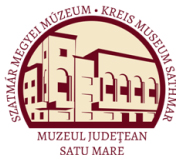Marta, Liviu: The Late Bronze Age Settlements of Petea-Csengersima (Satu Mare, 2009)
V. Conclusions. Contribution of the Petea-Csengersima Excavations to the Knowledge of the Late Bronze Age
V. Conclusions. Contribution of the Petea—Csengersima Excavations to the Knowledge of the Late Bronze Age. The rescue archaeological excavations undertaken at Petea—Csengersima allowed the study of one of the most extensive areas of a setdement of the Late Bronze Age from the Carpathian region (aprox. 4 ha). The analysis of the large pottery assemblage discovered here offers the possibility to evaluate the cultural phenomena that took place during the Late Bronze Age in the region of the Upper Tisa and in the north of Transylvania. The Sudu de Sus culture. The analysis of the pottery assemblage from the setdement at Petea—Csengersima indicates that the settlement functioned in the late phase of the culture, in a period considered as coinciding with the final stage of the Suciu de Sus culture. The comparison with the archaeological material from the archaeological sites present in other regions of the culture points towards the existence of some differences in pottery that illustrate regional particularities and also different chronological moments within the culture’s evolution. Through its general characteristics, the settlement’s pottery offers a few elements that allow observations to be made concerning the evolution in the early stages of the culture. These come as a contribution to the internal evolution forwarded by T. Bader67 and by C. Kacsó66 . The Suciu de Sus I phase. The generally accepted contribution of the Otomani culture to the genesis of the Suciu de Sus culture was expressed as part of a more ample phenomenon that takes place in a vast region of the Tisa Plain. This phenomenon is represented by the expansion of the Otomani culture, which comes from the south-west in the region of the Upper Tisa. It is considered that the background it overlaps and the proportion in which the Otomani communities infiltrate determines local particularities, which in the case of the Plain of Satu Mare lead to a “detachment” having as a result the birth of the Suciu de Sus culture667 668 669. As it was seen, researchers place this process in different chronological stages, based on the cultural contact with neighbouring areas due to the lack of metal finds. Alongside the vessels from the tumulus at Medieşu Aurit that had been used to illustrate the Suciu de Sus I phase670, the finds from Solotvino671 and Lăpuşel672 are representative. The first of the settlements, and the Suciu I phase in general, was synchronised with the Otomani III and Wietenberg III phases673. On the other hand, by publishing the finds from Lăpuşel, C. Kacsó forwards a long evolution of the Suciu I phase, parallel with the Otomani II and III phases (from the period of the Hajdusámson — Apa deposits and in the period of the Koszider type deposits)674. The main argument for the Suciu I—Otomani II—Wietenberg II synchronism is the situation in the settlement at Medieşu Aurit - Ciuncaş675 676. Striated pottery is present here in a proportion of 90%, alongside Otomani II, Wietenberg II, Suciu I type pottery and excised pottery ' . The rescue archaeological research undertaken in 2003 in the setdement at Ciuncaş allowed the observation in the area of two successive habitations: Suciu I and Suciu II, both having different habitation characteristics attributed to the Otomani I and II phases, 667 Bader 1978. p. 74-75. 668 Kacsó 1987, p. 66-75. 669 Román-Németi 1990, p. 40. 67(1 Bader 1978, p. 74. 671 Kobal’ 1997 p. 117-121; Vasiliev et at. 2002, p. 29-45. 672 Kacsó 1995, p. 83-99. 673 Vasiliev et allia 2002, p. 43. 674 Kacsó 1995, p. 97. 675 Bader - Dumitraşcu 1970, p. 127-136. 676 Kacsó 1995, p. 97. 94
